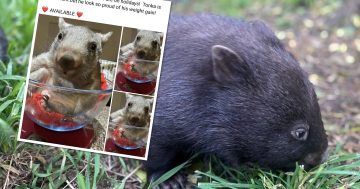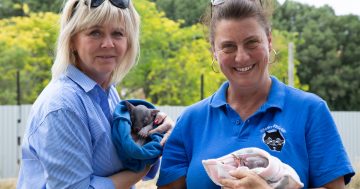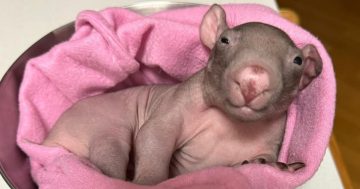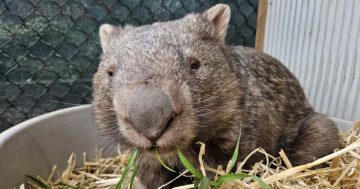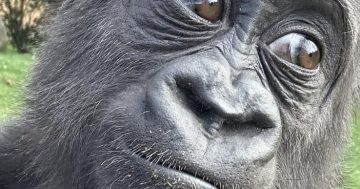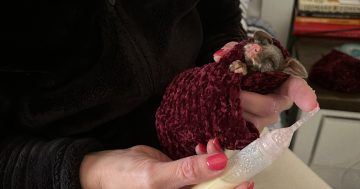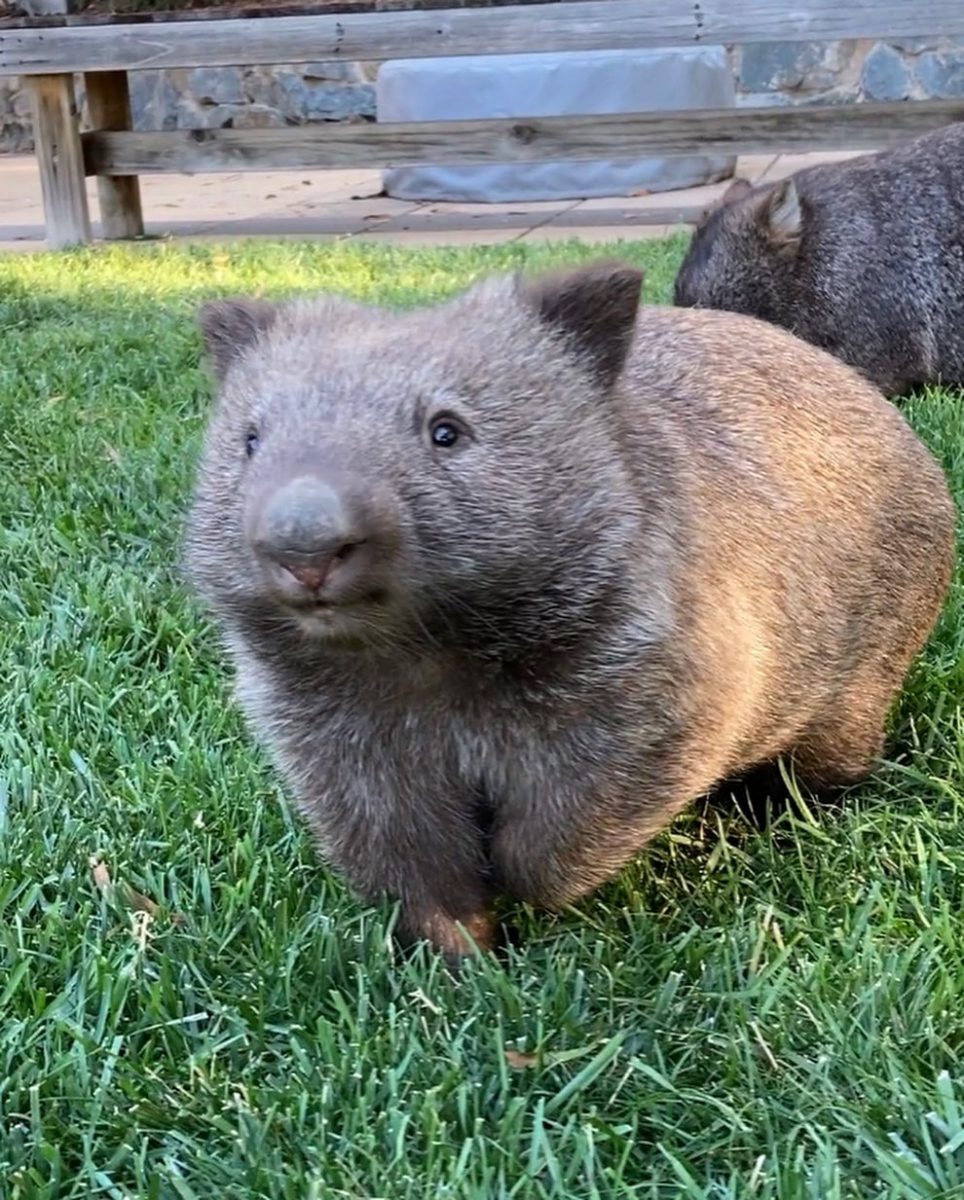
Chester the viral wombat. Photo: Sharon Woodward.
No one has quite mastered the recipe for what goes viral on Instagram.
One week it can be videos of people unsuccessfully trying to chug a can of sparkling water without burping before head-butting the garage door.
The next we have a man bopping in front of his bathroom mirror to ‘Say It Right’.
And last week, feeds around the world were filled with gratuitous slow pans of US bodybuilder Mike O’Hearn put to ‘Baby, Don’t Hurt Me’.
But there is one subject with the certain power to pause thousands of scrolling fingers: small animals. And in Australia, it turns out there’s an insatiable online appetite for wombats, in particular.
Some stars, including ‘Brindabella‘ – with 145,000 followers on the social media platform – and ‘Tonka‘, with 148,000, are based here in Canberra, and many more budding stars are preparing for their close-up.
I’m visiting former public servant turned wildlife carer Sharon Woodward in the suburb of Banks to see her two viral sensations, ‘Mimi’ and ‘Chester’. Collectively, their simple antics have attracted 31,800 followers to ‘deggs_digs‘ on Instagram.
“They’re not pets,” Sharon starts emphatically.
Sharon is a volunteer for ACT Wildlife, trained in handling wombats (among other native animals) and one of about 10 willing to take the very young and injured into their homes and rear them to full health.
“The wombats can be anything from tiny 100-gram pinkies to a few kilograms in weight when we get them,” she says.
The wombats start indoors – handfed by bottle every four hours for a few weeks – and slowly graduate to an outdoor enclosure as they grow in strength and independence. It’s illegal to keep native animals as pets, so once the wombats reach at least 18 months old or weigh 18 kilograms, they’re released back into the wild.
“We tend to release them before they’re sexually mature so they have a bit of time to settle in,” she explains.
Mimi and Chester came to Sharon with grazes on their legs at five months old. Today, more than a year later, they are refusing to exit their Sharon-made burrows and show their button-nosed faces to the camera. In the past, there has been Archer, Tina, Sylvie and others. A converted bird aviary further down the fence line houses the two possums, Francis and Jane.
“I’ve had one day in the past four years when I haven’t been looking after a wombat,” she says.
Of all of them, Archer took the most care. It took two major surgeries and 14 visits to the vet to get the young wombat back on all fours and ready for release on a private property near Braidwood.
“He was in a bad way when we found him, with a broken leg,” Sharon says.
And then there’s the fact these are animals with a built-in desire to dig holes under things, which explains why Sharon has spent hundreds of dollars over the years girding enclosure with chicken wire, steel poles and Colourbond sheeting. And has plans to expand it.
“We don’t have to teach them anything, but more give them the opportunity to practice their wombat behaviours – like digging burrows and spending their nights browsing on the grass in their enclosure.”
But don’t let looks fool you – wombats aren’t as cuddly as the videos might make them look.

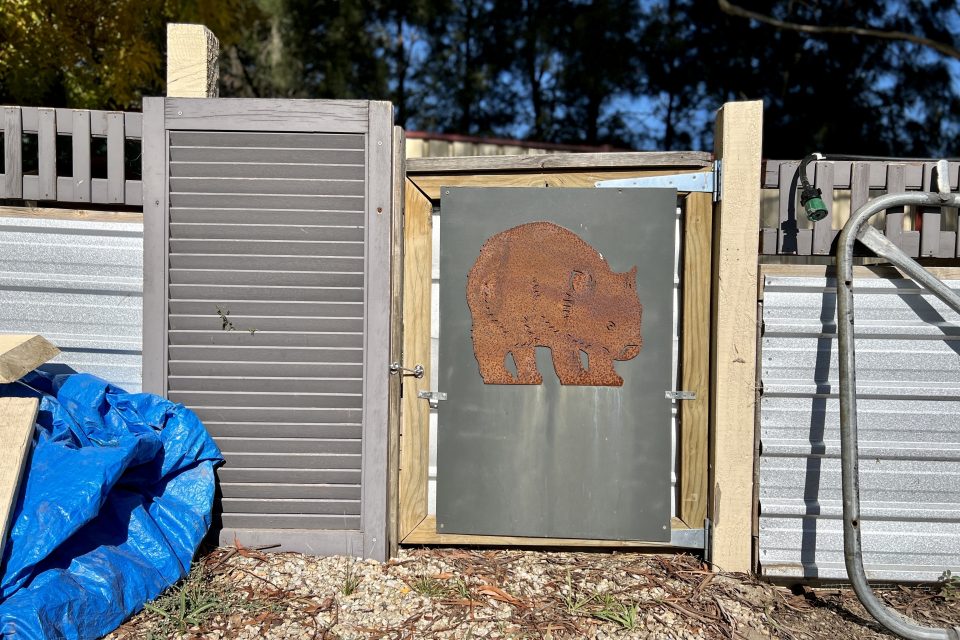
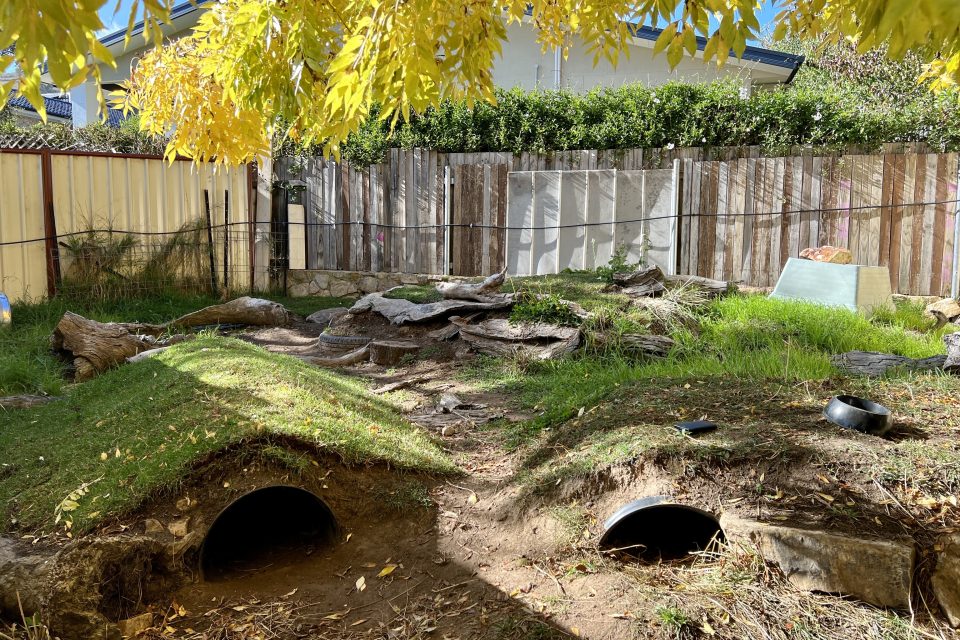
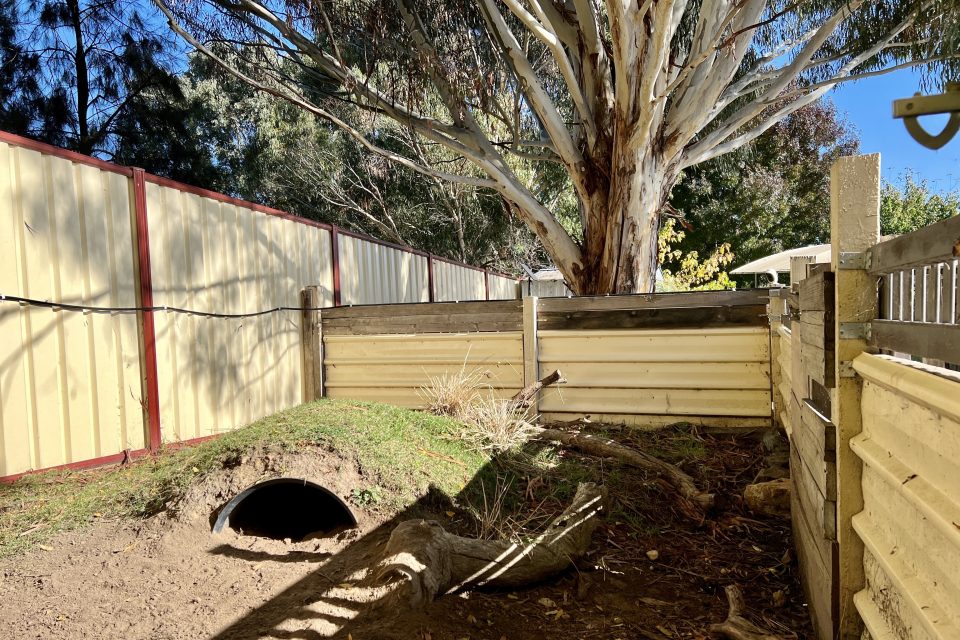

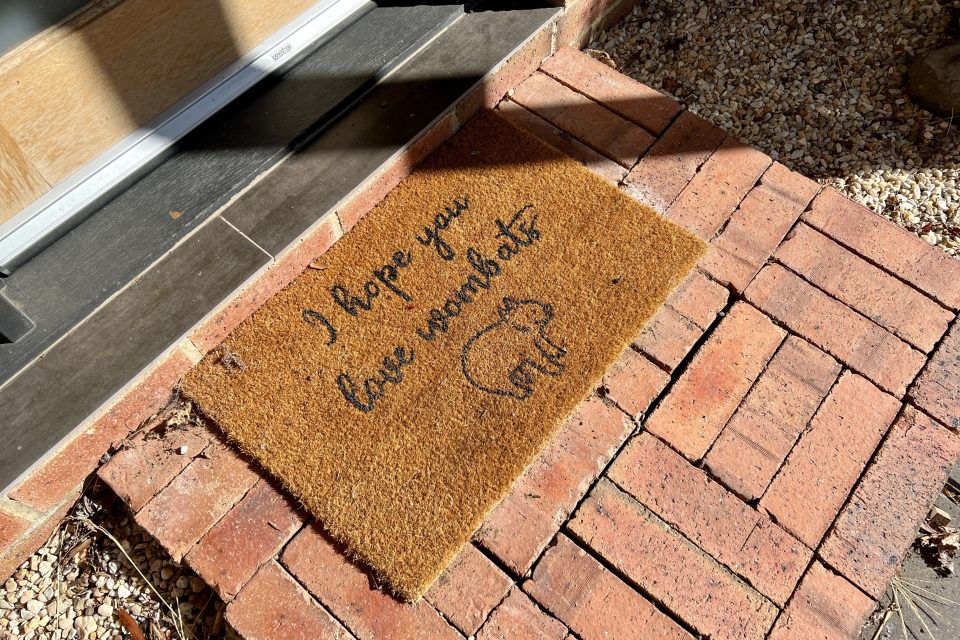
“I’ve got bruises on my legs from when Chester charges,” Sharon says.
“And when I had Archer, I had to come in here with a rake to keep him away while I did what I needed to do. And I took a video of when I had to catch him for release – he’s going in circles trying to attack me and I’m spinning him around to try to get a hold of him.”
Fortunately, the girls are less aggressive, and “each one can be so different”.
“Sylvie would zoom around the place and do roll-overs, while Tina was a really serious one who was just about eating and getting on with life.”
But it’s all worth it.
“They have hugely dedicated international followers,” Sharon says.
“It’s amazing – people just love them. I think part of that is because we have them for so long, and people can follow their journey from when they’re cute and tiny to when they’re big and chunky and being released to the wild. We then have to explain why it’s good to release them.”
The love has got to the point ACT Wildlife occasionally catches wind of elaborate plans to kidnap the wombats with suitcases and sweet potatoes under cover of darkness. Sharon even gets people asking to visit.
“There’s a real wombat-loving community outside of Australia.”
Mimi and Chester have yet to reach the ideal weight, so fans can continue to enjoy them until about September or October, when Sharon says they’ll most likely be released. Chin up, though.
“Oh yes,” Sharon replies to a question about whether there’ll be more wombats in the future.
“Especially if I’m about to expand their enclosure.”
Donate to ACT Wildlife online.












